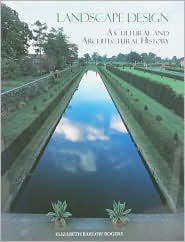Related posts:
 Pools and Landscape design ideas -Top 100 Designs and layout-ALL NEW PHOTOS
Pools and Landscape design ideas -Top 100 Designs and layout-ALL NEW PHOTOS
 Punch! Home & Landscape Design Suite with NexGen Technology
Punch! Home & Landscape Design Suite with NexGen Technology
 Punch Software Home And Landscape Design Suite Nexgen 2 – Windows
Punch Software Home And Landscape Design Suite Nexgen 2 – Windows
 Punch! Home & Landscape Design Studio Pro for Mac v2 [Download]
Punch! Home & Landscape Design Studio Pro for Mac v2 [Download]
 Landscape Design: A Cultural and Architectural History
Landscape Design: A Cultural and Architectural History
 Rapidesign Landscape Drafting and Design Template landscape template
Rapidesign Landscape Drafting and Design Template landscape template





With intelligent text and breathtaking photographs With 630 illustrations, many created just for this book (430 of which are in full color), Elizabeth Barlow Rogers’ Landscape Design: A Cultural And Architectural History offers dazzling, panoramic beauty to complement its extensive commentary on landscapes throughout history, ranging from Stonehenge and the Forbidden City of Beijing to Versailles and New York’s Central Park. This comprehensive survey, with its intelligent text and breathtaking photographs, is highly recommended to anyone interested in the history of landscaping since the dawn of humanity.
A note about the photos Very well researched history of landscape design. However, I wouldn’t go so far as to describe the photographs as ‘breathtaking’ as does another reviewer. There are many of them, all interesting, but almost all (apart from a brief intro sequence) only quarter or eighth page size. As a result, there is no image as impressive as the front cover. This is my only quibble, and the reason for 4 not 5 stars: why have a book so big and then not make full use of its size to present such a visually-based subject?
Landscape Design: A Cultural And Architectural History From Nineveh to a mobile home in Pecos, NM, Rogers casts a wide net, exploring the evolution of formal landscaping in parallel to humansÕ urge to put their mark on the earth. A scholar, who administered New YorkÕs Central Park for two decades, she provides a compelling account of the cultural roots that underly the plantings, explaining the ideas inherent in unfamiliar and classic gardens. Every page contains sharp insightsÑfor example, her suggestion that the broken column that the Baron de Monville built as his house at the Desert de Retz outside Paris in the 1780s portended the revolution that would sweep away the civilization he cherished. The abundance of plans and illustrations do ample justice to the text. (Michael Webb is the book reviewer for LA Architect magazine.)
Comments are disabled for this post.